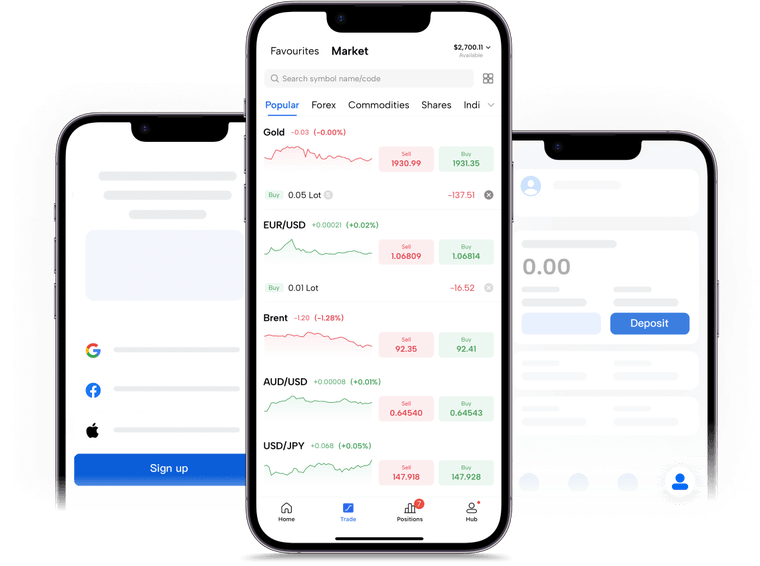
As investors seek stability and diversification in their portfolios, especially in uncertain economic periods, gold stands out as one of the best options. How many types of gold exist? Before diving into golden investments, it's crucial to grasp the various forms that gold can take.
From traditional physical bullion to innovative digital assets and intricate derivatives, the world of gold investment offers a wide range of options, each with its own set of opportunities and pitfalls. In this article, we will explore different types of gold you must know before investing in gold and offer suggestions about developing a comprehensive gold investment plan.
1. Different types of gold in the world
The pricing of different gold types can vary widely. In today's market, there exist numerous approaches to categorizing gold, ranging from factors like gold purity, and colors to gold investment types and beyond.
These diverse classification methods provide valuable insights into the intricacies of gold assessment, catering to the varied demands and preferences of consumers.
Below, we delve into some of the most common gold classifications, offering a deeper understanding of the complexities involved in evaluating gold.
1.1 Categorize gold by the types of investment
Physical Gold:
Bullion: This includes gold bars and coins. Bullion is often purchased by investors who prefer to hold physical assets.
Jewelry: While primarily ornamental, gold jewelry also holds investment value based on its gold content.
Gold Exchange-Traded Funds (ETFs):
These are funds traded on stock exchanges that hold gold as the underlying asset. Investors buy shares in these funds, which represent ownership of a portion of the gold held by the ETF.
Gold Derivatives (Futures and CFDs):
Gold futures contracts typically involve physical delivery of gold upon expiration, although many traders opt to close out their positions before the delivery date by entering into an equal and opposite trade to make a profit. CFDs enable traders to profit from both rising and falling prices of gold, depending on whether they go long (buy) or short (sell) on the contract.
Register and trade live with 0 commission and low spreads! Trade Demo with 50,000USD RISK-FREE virtual money!
Gold Mining Stocks:
These are stocks of companies involved in gold mining and exploration. The value of these stocks is influenced not only by the price of gold but also by factors like production costs, management efficiency, and geopolitical risks.
Gold Certificates:
These represent ownership of gold stored in a vault. Investors hold certificates rather than physical gold, providing convenience and liquidity.
Gold Accumulation Plans:
These plans allow investors to accumulate gold over time by regularly investing fixed amounts. They may offer features like purchasing gold at average prices, making gold more accessible to retail investors.
1.2 Categorize gold by purity
Types | Purity | Remarks |
24-Karat | Consists of 99.9% gold content. | It's bright yellow in color and highly malleable. However, it's also the softest and most easily scratched form of gold, making it less suitable for jewelry that will be worn frequently. It is usually utilized for the casting of gold bullion and ingots for reserves. |
22-Karat | Comprises 91.7% gold and 8.3% other metals | 22-karat gold is less pure than 24-karat gold but still retains a significant gold content. It is commonly used in jewelry and investment coins. |
18-Karat | Comprising 75% gold and 25% other metals | 18-karat gold is for added strength and durability. This type of gold is popular in fine jewelry, combining a good balance of purity and strength. |
14-Karat | Comprising 58.3% gold and 41.7% other metals | 14-karat gold is more durable than higher-karat gold while still maintaining a respectable gold content. It's commonly used in a wide range of jewelry pieces or manufacturing commercial products. |
10-Karat | Comprises 41.7% gold and 58.3% other metals. | 10-karat gold is the least pure form of gold that can still legally be sold as "gold" in most countries. It's valued for its affordability and durability, often used in everyday jewelry pieces or manufacturing commercial products. |
1.3 Categorize gold by colors
Yellow Gold: Yellow gold is often supposed to the pure gold (24K). However, this is not correct; this type can be alloyed with other yellow-colored metals (such as copper) or low-content white metals (like zinc) to create a uniform yellow color.
White Gold: White gold is an alloy of gold mixed with white metals such as nickel, palladium, or silver, often plated with rhodium to enhance its appearance. It mimics the look of platinum and is popular in contemporary jewelry designs.
Rose Gold: Rose gold, also known as pink or red gold, is created by alloying gold with copper and sometimes silver. It has a warm, pinkish hue and is favored for its vintage appeal in jewelry.
Green Gold: This gold variation results from mixing gold with silver, zinc, or other metals to achieve a greenish hue. It's less common than other gold alloys and is primarily used in specialized jewelry designs.
Black Gold: This gold is created by applying various surface treatments, such as oxidation or electroplating, to gold or gold alloys to achieve a dark, black color. It's used predominantly in men's jewelry and contemporary designs.
2. How to build a gold investment plan from different types of gold
Building a gold investment plan can vary based on the investor's experience level and capital.
Let’s outline the key points:
Trader Types | For Traders with smaller amount of capital | For Experienced Traders with a Large Amount of Capital |
Situation for Traders | These types of traders don't have too much choice to diversify their portfolio with different types of gold due to limited trading knowledge about checking and storing gold, as well as capital allocation. | These types of traders have more choices compared to low-capital traders, allowing for diversification across different types of gold through deep analysis. |
Hightlights | -Consider related products that have lower onset capital requirement such as gold CFDs, gold ETFs -Start with a demo account. -Consider a conservative allocation to gold -Utilize risk management tools such as stop-loss and trailing stop orders. -Stay informed about the performance of your gold investments. | - More freedom to choose physical gold or non-physical gold combined with technical and fundamental analysis techniques - Implement risk management and portfolio optimization based on market trends. |
Upon reviewing the table, you may gather significant information. The following section offers a systematic approach in assessing gold opportunities for both trades with limited capital or experience traders with substantial funds.


2.1 For Traders with a small amount of capital
# Step 1: Research
- A trader should start by researching the basic knowledge of gold investing. Understand the different types of gold investments available, such as physical gold, gold ETFs, gold mining stocks, and gold futures/CFDs.
- Learn about the factors that influence the price of gold, including economic indicators, geopolitical events, and market sentiment.
- Utilize resources like online tutorials, investment blogs, and gold investment forums on investing in gold.
# Step 2: Choose the Type of Gold Investment
- Consider the advantages and disadvantages of each type of gold investment based on your risk tolerance and investment targets.
- You can also consider Gold CFDs and start with a Demo account to get familiar with trading and how the gold market works.
- Alternatively, gold ETFs provide exposure to gold market without the need for storing physical gold, making it a fuss-free experience for traders.
# Step 3: Investment Targets
- Set realistic investment goals based on your financial situation (how much you can invest), risk tolerance (how much you are willing to risk), profit expectations (how much return you anticipate), and investment time horizon (how long you plan to maintain your investment position).
- For example, your target might be to preserve the value of your savings by investing a portion in gold to hedge against inflation and currency devaluation.
# Step 4: Capital Allocation
- Allocate a portion of your capital to gold investments based on your investment targets and risk tolerance.
- Since you have a small amount of capital, consider starting with a conservative allocation to gold
- Determine how much of this allocation will be dedicated to different products or just in one product, also considering other factors such as cost, ease of liquidation.
# Step 5 Follow and Monitor
- Stay informed about the performance of your gold investments by monitoring market trends and news related to the gold market.
- Regularly review your investment portfolio to ensure it remains aligned with your investment targets and risk tolerance.
- Focus on learning and gaining experience in gold investing, and be prepared to adjust your investment strategy over time based on your evolving knowledge and financial goals.
2.2 For experienced traders with a large amount of capital
# Step 1: In-Depth Analysis
- Conduct comprehensive research and analysis of the gold market, including fundamental, technical, and macroeconomic factors.
- Utilize advanced analytical tools, data sources, and research platforms to gain insights into supply and demand dynamics, economic situations, geopolitical risks, central bank policies, and market sentiment.
- Develop a deep understanding of the various drivers that influence gold prices, such as inflation, interest rates, currency movements, and investor sentiment.
# Step 2 Diversification Across Gold Investments
- Diversify your gold investments across multiple asset classes within the gold market to manage risk and enhance returns.
- Allocate capital strategically across physical gold, gold ETFs, and derivatives such as gold futures and CFDs.
- Consider incorporating both long-term, passive investments and short-term, active trading strategies to capitalize on different market conditions and investment opportunities.
# Step 3: Active Trading
- Implement active trading strategies to exploit short-term price movements and trading opportunities in the gold market.
- Utilize technical analysis, chart patterns, and quantitative models to identify entry and exit points.
- Consider employing leverage and derivatives such as gold CFDs to enhance returns and manage risk in your trading portfolio.
# Step 4: Stay Informed and Adaptive
- Keep tracking market developments, news, and events that could impact the gold market in real time.
- Maintain a flexible and adaptive investment approach, adjusting your trading strategies and positions in response to changing market conditions and new information.
- Monitor economic indicators, geopolitical tensions, central bank actions, and shifts in investor sentiment to anticipate potential market movements and adjust your trading strategy accordingly.
# Step 5: Risk Management and Portfolio Optimization
- Implement risk management practices to protect your capital and preserve profit.
- Set predefined risk limits, position sizes, and stop-loss levels for each trade to mitigate potential losses.
- Regularly review and optimize your portfolio to ensure it remains aligned with your risk tolerance, investment objectives, and market outlook.
- Utilize diversification, asset allocation, and trading strategies to optimize risk-adjusted returns and maximize portfolio efficiency.
3. FAQs about gold investments
3.1 Does buying gold jewelry retain its value?
Gold jewelry can retain its value over time, but the value may not solely be based on the gold content. Factors such as craftsmanship, brand reputation, and design aesthetics can also influence the price.
When purchasing gold jewelry as an investment, consider buying pieces with high purity (e.g., 24-karat gold) and recognizable brands or designs that have a strong resale value.
3.2 How to avoid buying fake gold?
Purchase from reputable and trusted sources such as established jewelers, and bullion dealers. Verify the authenticity of the gold through hallmarks, certificates of authenticity, or third-party appraisals.
Conduct thorough research and educate yourself about common methods used to fake gold, such as gold-plating or alloying with other metals.
3.3 Can I just trade on non-physical gold to gain exposures for price movement in Gold?
Yes. While trading derivative such as gold ETFs or gold CFDs may not exactly mimic the movement in price due to various factors discuss above, it does have some form of relativity to the spot Gold price.
3.4 What are the considerations for trading non-physical gold?
Several factors to consider are the reliability of the trading platform, ease of use, transaction cost, reputation of the platform provider.
Sources:
Different Types of Gold: Colors, Karats & More — Borsheims
The Best Strategy for Gold Investors
Different Ways to Invest in Gold | How to invest in gold in 2024? - BP Trends
How to Invest in Gold: An Investor’s Guide
Before making any trading decisions, it is important to equip yourself with sufficient fundamental knowledge, have a comprehensive understanding of market trends, be aware of risks and hidden costs, carefully consider investment targets, level of experience, risk appetite, and seek professional advice if necessary.
Furthermore, the content of this article is solely the author's personal opinion and does not necessarily constitute investment advice. The content of this article is for reference purposes only, and readers should not use this article as a basis for any investment decisions.
Investors should not rely on this information as a substitute for independent judgment or make decisions solely based on this information. It does not constitute any trading activity and does not guarantee any profits in trading.
If you have any inquiries regarding the data, information, or content related to Mitrade in this article, please contact us via email: insights@mitrade.com. The Mitrade team will carefully review the content to continue improving the quality of the article.

